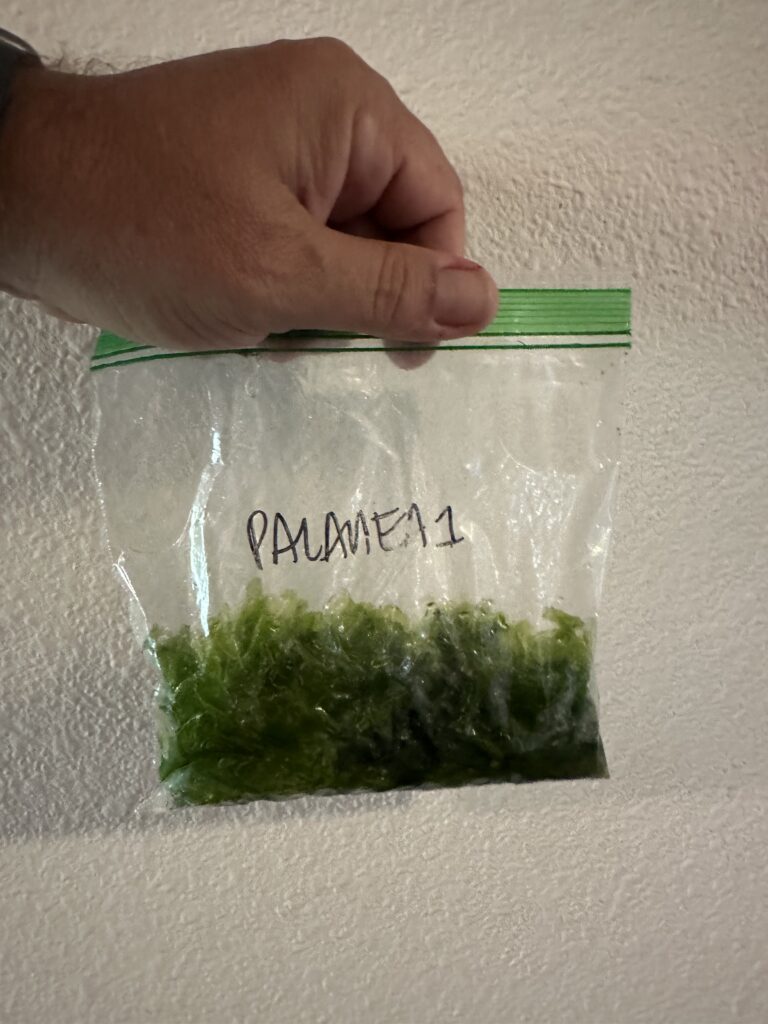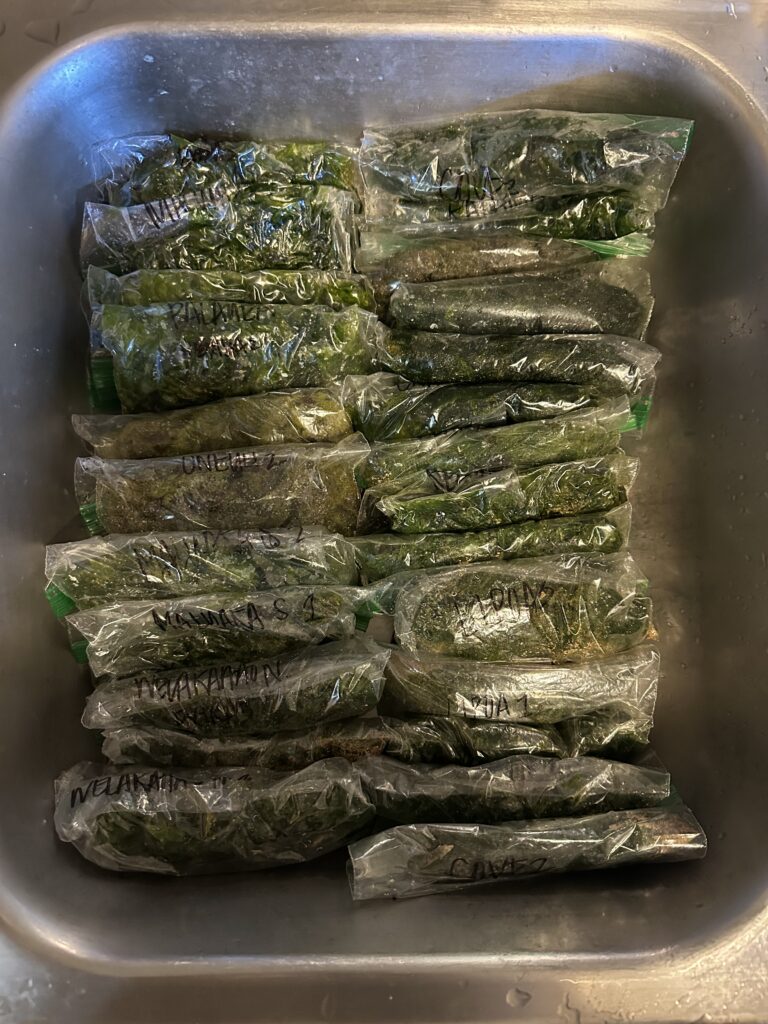Testing Limu for Pollution Sources in South Maui

After our volunteer day in February, limu samples from 12 South Maui sites were dried at 180º and then packaged and sent to the University of Hawaiʻi at Mānoa’s School of Ocean and Earth Science and Technology (SOEST) for Nitrogen testing.
Generally, ocean water pollution comes from commercial fertilizer, wastewater, or a mix of the two. Analyzing how much Nitrogen is present in sample tissue can give us clues about which one is the culprit. Levels around 2% or less are considered a normal standard for Nitrogen, but elevated levels signal enrichment in the water.

When we look at our results from testing in 2024, the highest level we saw was a little under 4.5%. While this is not alarmingly high, it is above the 2% threshold and is cause for further investigation. The default assumption is that enrichment is caused by commercial fertilizer. When rain hits commercial fertilizers that have been applied to the ground the Nitrogen in it is dissolved. If it is not absorbed quickly enough into plants, it is absorbed into groundwater or caught in runoff, both of which end up in the ocean.

Another possible pollution source is wastewater. Bacteria in sewage treatment processes tend to soak up Nitrogen 14 isotopes. Both Nitrogen 14 and 15 isotopes are naturally occurring, but when the ratio between the two is abnormal, we start to look for the presence of wastewater in the area.
MNMRC has been testing limu since 2019, but the results from testing in 2025 is what will give us enough information to truly start identifying patterns and trends.




No Comments
Sorry, the comment form is closed at this time.